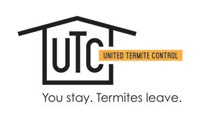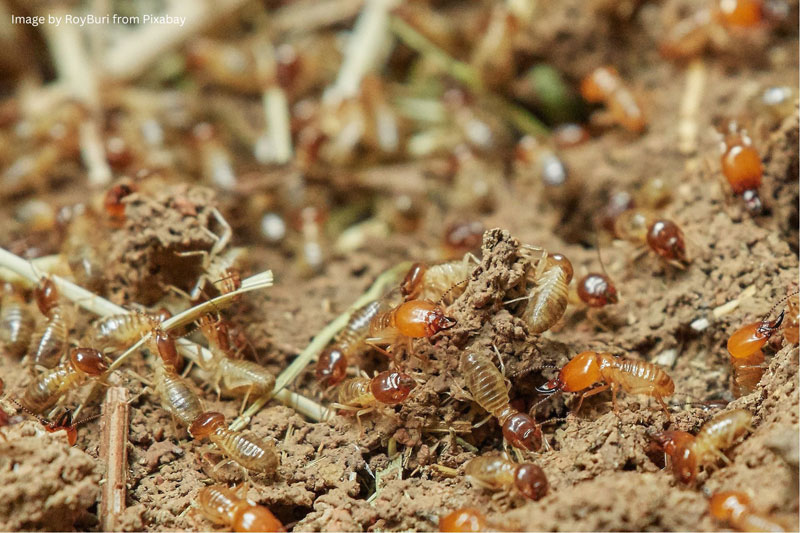Recognizing the Signs of Termites: Top 5 Tips Every Homeowner Should Know About Termite Inspections
Protecting your home from termite damage is a top priority for every homeowner. Termites may seem small and harmless, but without prompt inspection, they can cause significant structural damage and financial burden. That’s why it’s crucial to be proactive and educated about termite inspections.
We’ve compiled the top 5 termite inspection tips every homeowner should know. From identifying potential warning signs to finding a reputable termite inspection professional, these insights will help you stay ahead of the game and protect your home from termite infestations. Whether you’re a first-time homeowner or an experienced one, these tips will ensure that you have the knowledge and tools to inspect and safeguard your home from these destructive pests.
Recognizing the Signs of Termites
Termites, often referred to as ‘silent destroyers,’ can cause significant damage to your home without any immediate signs of their presence. Understanding how to recognize the subtle indicators of termites is crucial for early detection and effective termite control. This knowledge empowers you to take proactive steps to protect your home.
Common Signs of Termite Infestation:
- The presence of mud tubes along the foundation of your home or in crawl spaces
- Discarded wings around windowsills and light sources indicate termites swarming
- Hollow-sounding wood from termites tunneling through it
- Termite droppings or frass near termite entry points
- Buckling or warped wood surfaces
The Presence of Mud Tubes
Mud tubes along the foundation of your home or in crawl spaces are a clear indicator of termite activity. These pencil-thin tunnels, built by subterranean termites, provide a protective pathway from the ground to the wood in your home. Termites are highly sensitive to environmental conditions and build mud tubes to maintain the humidity they need to survive. The tubes also shield them from predators and allow safe passage as they seek out food sources in your structure.
Typically, mud tubes are found along the foundation, in crawl spaces, or inside walls where termites can travel unnoticed. These tubes are made of soil, saliva, and wood particles; spotting them early during a termite inspection can prevent extensive damage. If you discover mud tubes around your home, it’s important to act promptly by contacting a pest control professional to assess the extent of the infestation and recommend appropriate treatment options.
Discarded Wings
Finding discarded wings around windowsills, doors, or light sources is a strong indication of a termite swarm. Termites shed their wings after mating, signaling that they’re establishing a new colony nearby. Swarming typically occurs during warm weather or after rain, when reproductive termites, known as alates, leave their mature colony to find a new nesting site.
The wings are often left near light sources because termites are attracted to light during their short flight. These translucent wings can resemble fish scales and are easy to overlook, but they are a significant warning sign. The presence of discarded wings indoors indicates that termites may have already gained access to your home. Detecting them early can help prevent structural damage, as termites quickly begin tunneling through wood once they establish a colony. If you notice these wings during a term, it’s wise to contact a pest control specialist for a thorough termite inspection and treatment plan.
Hollow-Sounding Wood
A hollow-sounding wood surface is a key sign of a termite infestation. As termites feed on wood, they consume it from the inside out, often leaving just a thin outer layer that conceals their extensive tunneling within. Tapping on areas like walls, floors, or wooden beams may produce a hollow or papery sound, indicating that termites have likely tunneled through the wood, weakening its structure.
This hollowness occurs because termites avoid the outer surface, creating empty spaces inside the wood. Over time, the structural integrity of the affected area is compromised, which can lead to costly repairs if not addressed. In severe cases, visible cracks or peeling paint may appear as the wood deteriorates. Spotting these signs early during your termite inspection can help prevent significant damage. If you detect hollow-sounding wood, it’s essential to contact a pest control professional immediately to assess and treat the infestation before it spreads further.
Termite Droppings
Termite droppings, also known as frass, are a telltale sign of a dry wood termite infestation. Unlike subterranean termites that build mud tubes, drywood termites nest directly inside the wood they consume. As they tunnel, they create small kick-out holes through which they expel their droppings, leaving tiny piles of frass near entry points such as baseboards, windowsills, or door frames. These droppings often resemble sawdust or coffee grounds and can vary in color depending on the wood they’ve consumed.
Frass indicates active termite activity, and its presence should be taken seriously, as it signals that termites are nesting and feeding within your home’s structure. Regularly inspecting for these small piles of droppings can help in the early detection of an infestation. If you discover frass, it’s essential to consult a pest control professional immediately to prevent further structural damage and stop the infestation from spreading.
Buckling or Warped Wood Surfaces
Buckling or warped wood surfaces are significant indicators of termite damage in your home. When termites tunnel through wood, they consume it from the inside out, weakening its structural integrity. This process often changes the wood’s shape, causing it to swell, buckle, or warp. These visual signs can occur in various areas, including floors, walls, and door frames.
Buckling wood can result from moisture issues in addition to termite damage. However, when combined with other signs like frass, mud tubes, or hollow-sounding wood, it becomes a critical indicator of termite activity. Warped surfaces may also lead to doors and windows sticking, creating functionality issues throughout your home. A comprehensive termite inspection is necessary if you notice buckling wood, as it can prevent costly repairs and further structural damage.
Stay Termite-Free with Regular Termite Inspections
Regularly inspecting areas prone to termite activity, such as wooden structures, foundations, and basements, can help you spot these signs early on and take appropriate measures to address the issue promptly.
By familiarizing yourself with the signs of termites and conducting regular termite inspections, you can proactively protect your home from extensive termite damage and costly repairs. Early detection is critical in termite control. Stay vigilant and act swiftly upon noticing any indications of termite activity. Schedule a professional termite inspection today with United Termite. Rest assured that your home will be protected from termite damage.

